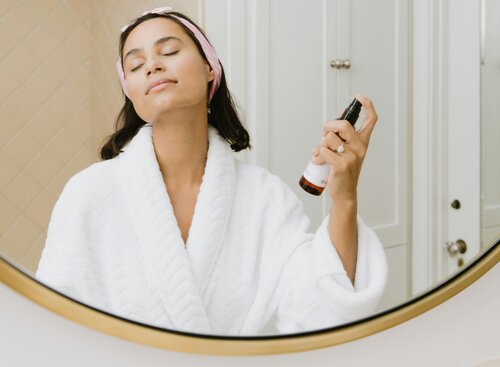Throughout history, women worldwide have gone to extreme lengths in pursuit of beauty. From using deadly nightshade in Renaissance Europe to lead-based foundation in eighteenth-century royalty, the risks taken for beauty have been significant. Even in modern times, harmful ingredients in cosmetics and personal-care products continue to pose health risks, including cancer, hormone disruption, and allergic reactions. While the trend towards “clean” beauty products is on the rise, the lack of universal standards and regulations means that what one company deems safe may not align with another’s definition of safety.
Transitioning to cleaner personal-care products can be a gradual process. Starting with products rated low in toxicity on platforms like the Environmental Working Group’s Skin Deep database can help identify safer alternatives. Swapping out conventional products for natural options, such as soap and shampoo, can reduce exposure to harmful chemicals and improve overall health.
Experimenting with different clean products may be necessary, as not all formulations may work well with individual skin types. Adjusting to new products may take time, but the benefits of cleaner ingredients can lead to healthier skin, hair, and nails in the long run.
When making the switch to clean beauty products, it’s essential to prioritize daily-use items like soap, lotion, and sunscreen. By gradually replacing conventional products with cleaner alternatives, it’s possible to reduce overall exposure to toxins and improve overall well-being.
Key Tips for Choosing Clean Personal-Care Products
Simplicity is Key
Reducing the number of products used can minimize exposure to harmful chemicals and promote healthier skin, hair, and nails.
Trial and Error
Experimenting with different brands and formulations is essential to finding the right clean products that work well for individual needs.
Strive for Progress, Not Perfection
While switching to cleaner products is beneficial, it’s okay to continue using certain conventional items if necessary.
Take it Slow
Gradually replacing products with cleaner alternatives over time can make the transition to clean beauty more manageable.
Prioritize Daily Essentials
Focus on updating products used frequently, such as soap, lotion, and toothpaste, to maximize the benefits of cleaner ingredients.
DIY Natural Deodorant Recipe
- 2½ teaspoons unrefined coconut oil
- 2½ teaspoons unrefined shea butter
- 2 teaspoons baking soda
- ½ cup arrowroot
- 6 drops lavender or orange essential oil
- 6 drops grapefruit essential oil
- 2 drops tea tree oil
Combine coconut oil and shea butter in a glass jar, then melt over a double boiler. Stir in baking soda, arrowroot, and essential oils. Allow the mixture to cool and solidify before use. Apply with fingertips and store in a cool, dry place.
About the Author
Dr. Aly Cohen is a renowned rheumatologist and integrative medicine physician with expertise in environmental health. Her book, DETOXIFY: The Everyday Toxins Harming Your Immune System and How to Defend Against Them, sheds light on the connection between everyday chemicals and immune disorders. Dr. Cohen continues to educate and practice medicine in Princeton, New Jersey.

